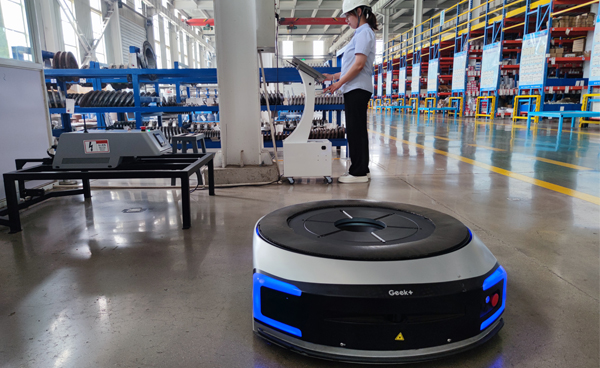
Nov . 09, 2024 09:13
Back to list
Exploring the Functionality and Applications of Pneumatic Valves in Industrial Systems
Understanding Pneumatic Valves A Key Component in Automation
Pneumatic valves play a crucial role in various industrial applications, serving as a key component in the control of air flow and pressure within pneumatic systems. These valves are commonly used in automation processes, providing efficiency and precision in the operation of machinery and equipment. This article will delve into the types, functions, and advantages of pneumatic valves, highlighting their significance in modern industry.
What Are Pneumatic Valves?
Pneumatic valves are devices that regulate the flow of compressed air or gas in a pneumatic system. They control the direction, pressure, and flow rate of the air, allowing for the precise operation of pneumatic tools, actuators, and other equipment. As part of a larger pneumatic system, these valves facilitate automation and control in various applications, from assembly lines to robotics and packaging machinery.
Types of Pneumatic Valves
There are several types of pneumatic valves, each designed to perform specific functions. The most common types include
1. Directional Control Valves These valves manage the direction of airflow within the system. They can be classified into two-position or three-position valves, depending on how many states they can hold. For example, a double-acting cylinder may require a four-way valve to control its operation effectively.
2. Flow Control Valves These valves regulate the speed of actuators by controlling the flow rate of air. By adjusting the flow, operators can fine-tune the performance of pneumatic devices, ensuring they operate smoothly and efficiently.
3. Pressure Relief Valves Safety is paramount in pneumatic systems, and pressure relief valves ensure that excessive pressure does not build up. These valves automatically vent excess pressure, preventing potential damage to equipment and maintaining operational safety.
pneumatic valve

4. Solenoid Valves Often used in automation, solenoid valves are electrically operated and allow for rapid switching of air flow. They provide quick response times, making them ideal for applications requiring precise timing or rapid cycling.
Advantages of Pneumatic Valves
Pneumatic valves offer numerous benefits that make them indispensable in industrial applications
- Speed and Efficiency Pneumatic systems can operate at high speeds, and valves designed for these systems can facilitate quick response times, enhancing overall productivity.
- Simplicity and Reliability The design of pneumatic valves is generally straightforward, leading to fewer mechanical failures. This reliability ensures that machinery operates smoothly with minimal downtime.
- Cost-Effectiveness Compared to electric systems, pneumatic systems are often more cost-effective, both in terms of initial investment and maintenance. The availability of compressed air in many facilities also reduces the need for extensive electrical infrastructure.
- Safety Features With built-in pressure relief mechanisms, pneumatic valves contribute to the overall safety of industrial systems, protecting equipment and personnel from potential hazards.
Conclusion
In summary, pneumatic valves are vital components in the realm of automation and industrial control. With various types designed for specific functions, these valves contribute to the efficiency, safety, and reliability of pneumatic systems. As industries continue to advance toward more automated processes, the importance of pneumatic valves will only increase, solidifying their role as indispensable tools in modern manufacturing and engineering. Understanding these valves and their functionalities is crucial for anyone involved in designing, implementing, or maintaining pneumatic systems, ensuring optimal performance in a wide range of applications.
Latest news
-
Safety Valve Spring-Loaded Design Overpressure ProtectionNewsJul.25,2025
-
Precision Voltage Regulator AC5 Accuracy Grade PerformanceNewsJul.25,2025
-
Natural Gas Pressure Regulating Skid Industrial Pipeline ApplicationsNewsJul.25,2025
-
Natural Gas Filter Stainless Steel Mesh Element DesignNewsJul.25,2025
-
Gas Pressure Regulator Valve Direct-Acting Spring-Loaded DesignNewsJul.25,2025
-
Decompression Equipment Multi-Stage Heat Exchange System DesignNewsJul.25,2025

